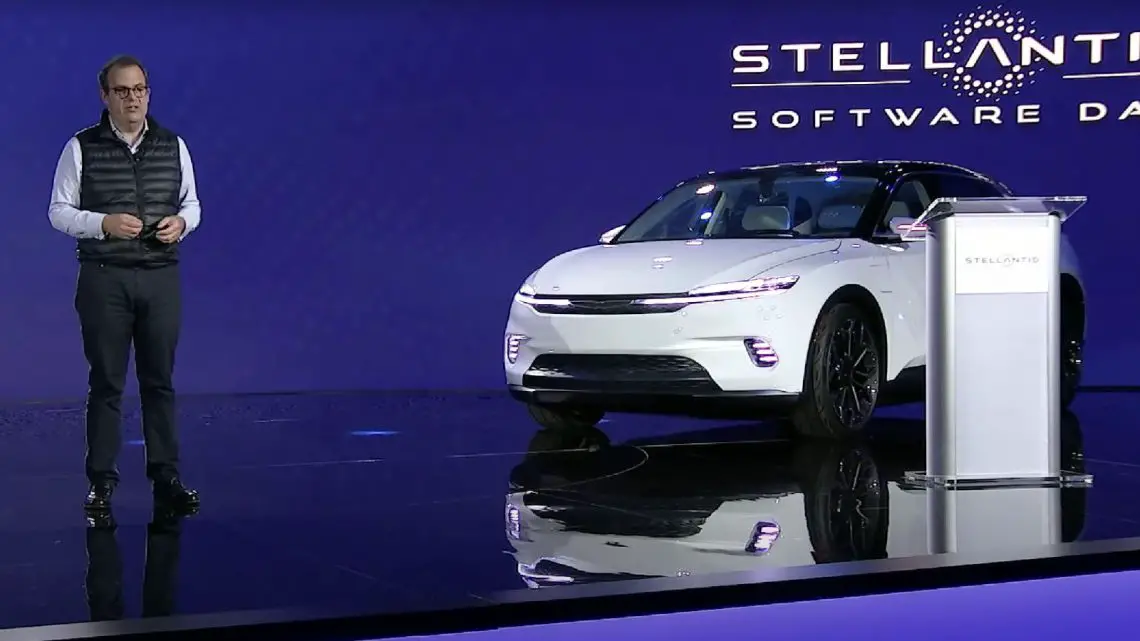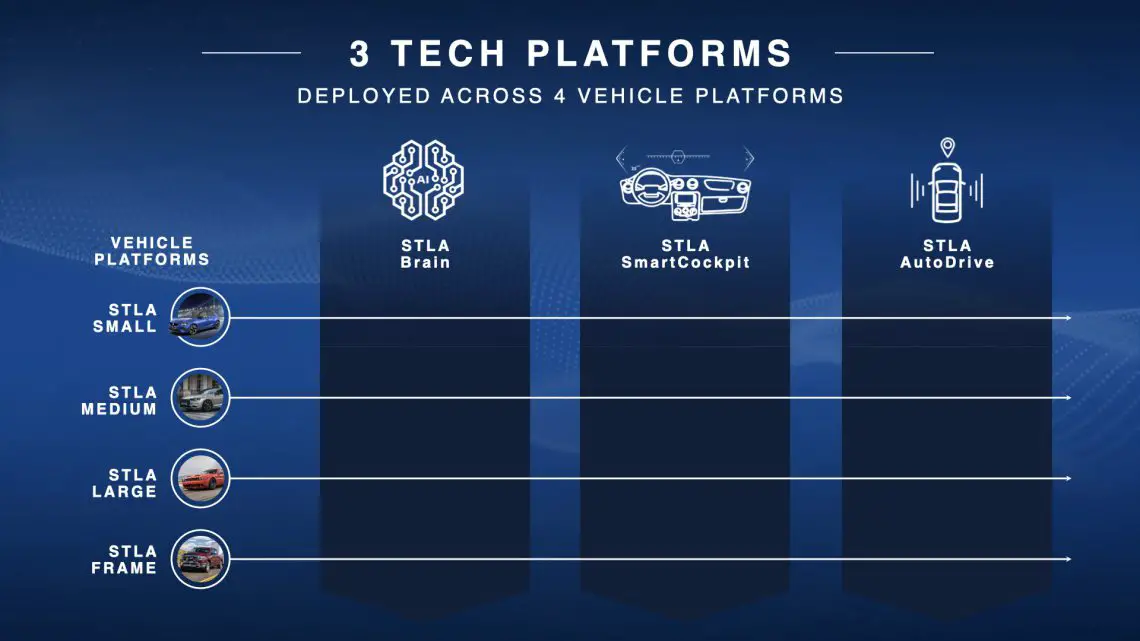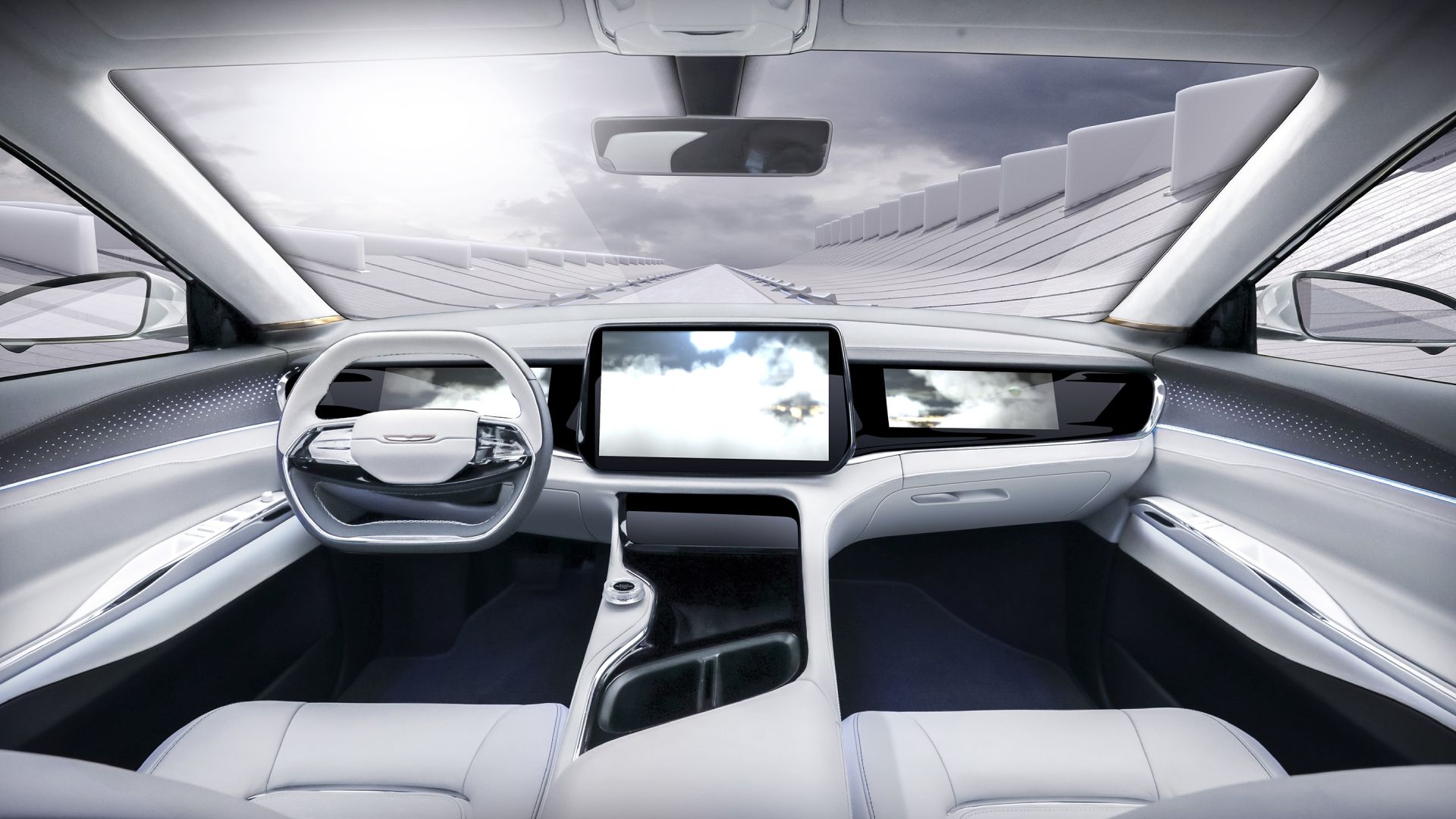Stellantis sees nothing in autonomous driving for consumers: ‘Gonna cost too much money’
Autonomous driving too expensive for consumers
In a small conference room at the back of the DS Automobiles booth, we speak with Yves Bonnefont (51), the man responsible for preparing Stellantis’ software for the future. He holds one of the most important positions in the Stellantis group, because having good software is now vital if you want to survive in the auto industry.
He makes a remarkable statement in the conversation when it comes to fully autonomous driving. Indeed, Bonnefont sees no bread in it for passenger cars. “The cost to an individual is far too high,” he states. He did stress that Stellantis will offer consumers the option of semi-autonomous driving starting in 2024, giving the driver room to let go of the wheel on certain stretches. However, fully autonomous driving remains reserved for the business market, for example for robotic cabs and self-driving delivery vans.
We also talk with Bonnefont about Stellantis’ overall software strategy, the differentiation between its different brands and the ways Stellantis plans to make money from software in the future.

Central software strategy Stellantis
Currently, the former FCA and PSA brands still have their own software platforms. What steps is Stellantis taking in the coming years to bring these brands together?
“Our strategy with Stellantis is to build new software platforms that are entirely our own. It starts with the cockpit, which we call “SmartCockpit. In 2024, SmartCockpit will come to market and this software platform will eventually be found in every car of ours. We are building it with two partners: Foxconn and Amazon. These partners help us accelerate development, but the intellectual property of the software is in our hands. It will be quite a different ecosystem than traditional automotive software, much more focused on tech.”
Doesn’t that make it much too complicated?
In fact, we want to simplify the car’s user interface. Much of the current vehicle functions are not used by our customers. It’s a bit like your computer, typically you use about 20 percent of what Windows or any other platform offers you. We are studying in detail which functions our customers do use and we are going to make them easier to use. What is not used, we remove or put at the very back of the menus. So if you want to use it you can, but it doesn’t create a mess in the user interface. It’s a huge project we’re working on right now.”
What software steps is Stellantis taking besides SmartCockpit?
“Our second tech platform relates to autonomous driving (STLA AutoDrive, ed.). We are working with BMW for this tech platform. This will also come on the market in 2024 and after that we will continue to improve it. In addition, a third platform called STLA Brain will appear in the same year. This is the electronic architecture of the car and the software. The big difference with these platforms compared to what’s on the market now is that the platform is going to be ours. So we can continuously update it. Over-the-air updates along with these three platforms are the core of our strategy.”

Over-the-air updates are already becoming commonplace in the marketplace. How will Stellantis differentiate itself on that front with the new platforms?
“Now we can already perform over-the-air updates, probably more than our competition. By now we have already delivered more than 40 million updates to our vehicles in the field. It’s mostly about the cockpit, but with the platforms I described, we can update the entire car. The three software platforms are coming to all future vehicle platforms from Stellantis: STLA Small, STLA Medium, STLA Large and STLA Frame. We’re going to continually upgrade that technology. Those upgrades are not just coming to new cars, but also to cars on the street. That may include new features that weren’t there when those cars were delivered.”
With these new software platforms, will individual Stellantis brands still have the freedom to pour their own sauce over them?
“As you know, you’re talking to the man who created DS Automobiles,” Bonnefont says with a chuckle. “So I’m sensitive to this kind of thing. We believe software is a powerful way to create differentiation between brands because you can build different applications for each brand.”
“Take for example a feature like Jeep Convoy, where the GPS system is set to a car in front of you. Both cars “talk” to each other over a mobile network. In the case of Jeep, for example, the cars then alert each other to a dangerous route if you are driving off-road. Then you take the building blocks of that software and give it more of a friends and family flavor for Citroën and Fiat, for example. Then if you go away for a weekend with two cars and a bunch of friends, you can make sure on the road that you can share a music playlist between the cars, for example, via the same system. So with the building blocks of the software, we can really create features specific to each brand.”
“I think this is very important for Stellantis because we have great brands that we don’t want to dilute. The brands make the group strong, and with software we can make the differentiation of the brands even steller and more efficient than with hardware while limiting the investment needed.”
We believe that software is a powerful way to differentiate between brands because you can build different applications for each brand.
Yves Bonnefont
Software as a means to make cars cheaper AND make money
So you are saying that software can reduce development costs. What we now see in the European market is that new cars are getting more and more expensive and the smallest cars are disappearing from showrooms. Meanwhile, software is playing an increasingly important role in cars. But can software also play a role in making cars cheaper?
“That is definitely something we are working on, because that is very important. A constant increase in regulation and consumerism is driving up the price of cars in Europe. You can say that it makes cars better, but it also makes them no longer affordable for a large proportion of customers. That creates a problem. We believe that in some cases, but not all, software can bring down the cost of hardware.”
“Let me grab an example for you: right now, a car must have a sensor that detects if someone is in the seat and gives a warning if the seat belt is not fastened. At the same time, there are regulations in the pipeline that make it mandatory to have a camera in the car that monitors whether the driver is looking at the road. If there is a camera watching the driver, the software can look inside the car and see that there is a child in the back seat without a seat belt. So I can omit all the sensors that are supposed to detect that. So you can use software to make cars smarter and save on sensors. It’s not a huge percentage, but you can certainly optimize it.”

Your boss expects a €20 billion income stream from software by 2030. That’s a pretty ambitious goal. How will you achieve this?
“We are working very hard on this. What I can tell you is that we are seeing growth in our software revenue this year that is on track with this plan. Last year we achieved just under €400 million. Right now we are, however, pushing five business areas. The first consists of the services we sell on delivery of the car, for example navigation services in Europe. We are going to sell more and more of these kinds of services with the car.”
“The second pillar consists of subscriptions, which amounts to renewing previous services along with other services at a later stage. The third category is ‘feature on demand,’ for example, ‘connected alarm.’ This is a feature that was not yet there for some cars when they entered the market. Then we can sell the feature afterwards. In this category we also have software related to the safety systems and the infotainment system. This is also true if you buy a used car and the first owner did not purchase certain features. You can then add the options you want yourself.”
“The fourth piece consists of anything related to data. Think, for example, of insurance based on the use of the car. You then only pay when you actually drive and allow the manufacturer to share this data with the insurer. In addition, we can provide fleet management services, but also anonymize certain vehicle data. This allows you, for example, to see certain patterns in the infrastructure to better assess where there might be hazards. We can then bring those dangers to the attention of (local) governments. We worked with the Belgian government and found certain places where the infrastructure needed to be improved.”
“Finally, the fifth piece consists of connecting the car to the network. All of this is how we grow the software business to €20 billion by 2030, which is a pretty big number.”

Developments in autonomous driving
Finally, I want to talk to you about autonomous driving. The challenges in that area seem more difficult than the industry anticipated. Not only when it comes to technology, but also legislation. Do you personally believe in a future for the self-driving car?
“I think people are willing to pay for features that increase the safety of the car while giving them room to do something else when they are alone in the car. With our current systems, we have improved safety tremendously and people are willing to pay for it: more than 50 percent of customers choose ‘Level 2’ semi-autonomous driving. We are now moving to the next level where the driver no longer needs to be actively engaged in driving on some routes: ‘Level 3’. STLA AutoDrive will provide that capability, and I think people are willing to pay for that.”
“When you are talking about fully self-driving cars, ‘Level 4’ and ‘Level 5′, you are dealing with a totally different use of the car. You’re talking about professional use, for example a robot cab. But it can also be suitable for delivering packages in cities, an exploding business. However, today we can hardly see business potential for passenger cars with systems that enable fully autonomous driving. This is because the cost for an individual would be far too high. So this is a professional tool: companies can save on the driver and replace it with autonomous technology. We are currently working on that with Waymo.”

